
views
- Your toddler isn’t ready for a big kid bed if they have issues with sleeping through the night or if they don’t follow rules you’ve set.
- Keep your toddler in their crib if they aren’t able to climb out and if the railing is taller than their chest.
- Wait until your toddler is between 18 months and 3 years old to make the switch to a big kid bed.
Signs Your Toddler Isn’t Ready for a Big Kid Bed

They have sleep issues. If your toddler calls out for you during bedtime or wakes up in the middle of the night, trying to make the switch to a big kid bed may cause more problems. Your toddler may get out of bed or call out more repeatedly throughout the night to get your attention, which could form into a bad habit. Work through bad sleep habits before you switch to a toddler bed so the transition goes smoothly.
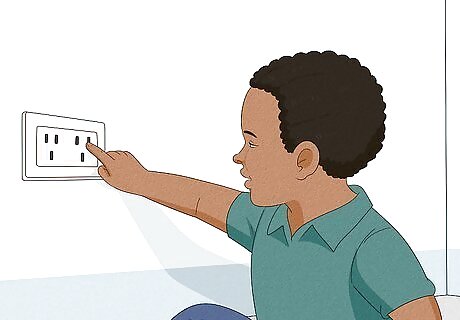
They push boundaries and don’t always follow rules. Switching from a crib to a bed gives your toddler a lot more freedom to explore their room, and they could get into a lot more trouble. If your toddler has a tough time following the rules and you’re worried about what they could get into while you’re asleep, keep them in a crib for now.

The crib railing is higher than their chest. When your toddler grows taller, there’s a higher risk they may fall over a crib’s railing. Check if the railing is still higher than their chest when they stand up. If you’re able to, drop the crib’s mattress to a lower setting and raise the railing. Once your toddler is over 35 inches (89 cm) tall or the crib reaches the middle of their chest, then it’s a good time to make the switch to a bed.
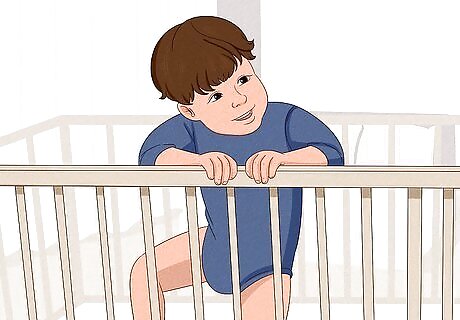
They aren’t able to climb out of their crib. If your child hasn’t found a way to climb over the crib’s railing yet, you’re probably safe to wait on transitioning to a toddler bed. When your toddler finds a way out of their crib, they could potentially fall and get injured. Toddler beds are closer to the ground and easier to get out of than a crib, so your child is less likely to get hurt.

They haven’t mentioned getting a bed. When your toddler wants to start sleeping in a big kid bed, they’ll ask you about getting one. If your toddler doesn’t bring up the topic, they’re probably still content in their crib.

There are other big life changes. If you’re expecting some big changes in the near future, like moving, starting a new daycare, or a new child, then it may be best to wait. Any changes in your toddler’s routine may already be stressful and transitioning to a bed may become a little overwhelming. If you’re having a new baby, try switching your toddler to a bed a few months before or a few months after the baby is born. That way, your child won’t feel pushed out of the crib by their new sibling.
What age is a toddler ready for a bed?

Between 18 months and 3 years old Every child is different, so there’s no set age guideline for when your toddler should make the switch. While many experts agree toddlers are ready when they’re between 2 and 3, signs your child is ready for a toddler bed include showing self-control, sleeping through the night, and following other rules you’ve set.
Preparing Your Toddler to Sleep in a Bed
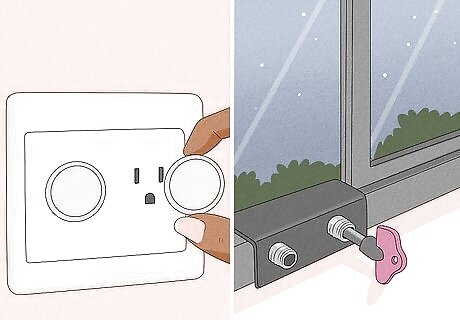
Toddler-proof the entire room. When you get rid of a crib and transition your toddler to a bed, they’ll have a lot more freedom to get up and move around the room. To prevent accidents and keep your toddler safe through the night, take time to childproof the bedroom by: Adding safety locks to the windows Wrapping curtain cords so they’re 5 feet (1.5 m) off the floor Installing outlet covers Securing heavy furniture with wall brackets Removing potential choking or climbing hazards Putting a safety gate in front of the door Pushing the side of the toddler bed against the wall
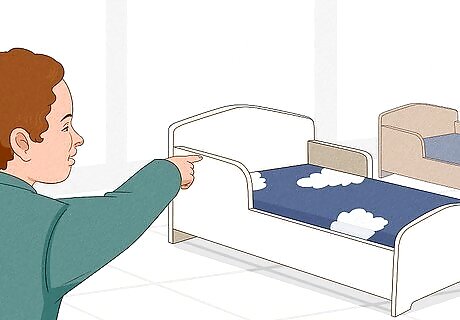
Let your toddler pick their bed or decor. Get your toddler involved when you’re choosing their new bed. Have them pick out the style of bed they want or let them help you choose bedding, pillows, or any other decorations that will go in their room. Letting your toddler make choices on their own will make them so excited to sleep in their bed and help the transition go smoothly.
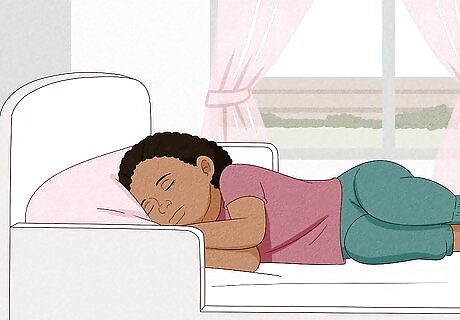
Start by using the toddler bed for naptime only. Rather than sleeping through the night right away on their new bed, use it just for your toddler’s daytime naps. That way, they can get used to sleeping in bed while you’re still awake to monitor them. As they get used to taking naps in bed, start having them stay in it overnight.

Maintain a consistent sleep routine. Giselle Baumet, owner of Granola Babies, says to “keep in mind that your toddler depends highly on a routine to their day [and] consistency.” Set a specific bedtime so your toddler can get 10–14 hours of sleep. Baby sleep specialist Julie Wright, MFT recommends “starting [with] wind down time a full hour before [bed]…to send cues to your child's internal clock…that the sun is starting to set.” She says winding down “includes things like turning off bright lights, closing the blinds, [and] turning off screens.” During this time, give your toddler a bath, sing songs, or read a bedtime story to help them calm down for the night. Baby sleep specialist Julie Wright, MFT says, “it's nice to end with what we call a little chat…It could be more of a talk about your day, what you did, or what you're going to do the next day.”

Give your toddler tons of encouragement. As your toddler is making the transition to their new bed, make sure to tell them how proud you are and give them a ton of praise when they sleep through the night. Try rewarding your toddler every time they stay in their bed through the night. You may keep a sticker chart by their bed to help motivate them or let them pick a special snack the next day.

Return your toddler to bed if they get up or call out. As your toddler gets used to sleeping in a big kid bed, there will probably be a few times when they wake up and call for you. The first time your toddler comes out, kindly ask them to stay in their bed and remind them that they need to get some sleep. If they keep getting up, calmly return them to bed without talking or punishing them. It may take a few days for your child to make the adjustment, but be patient and firm with them until they stay in bed.




















Comments
0 comment